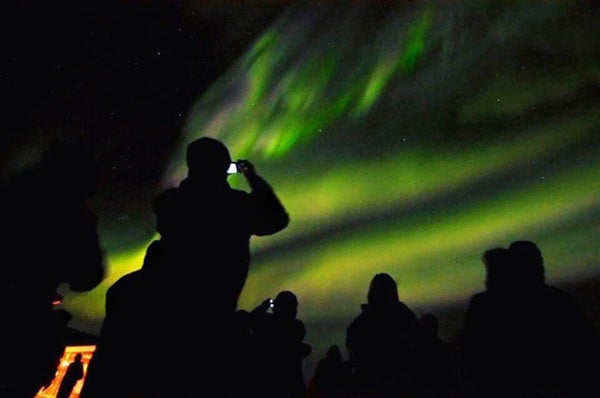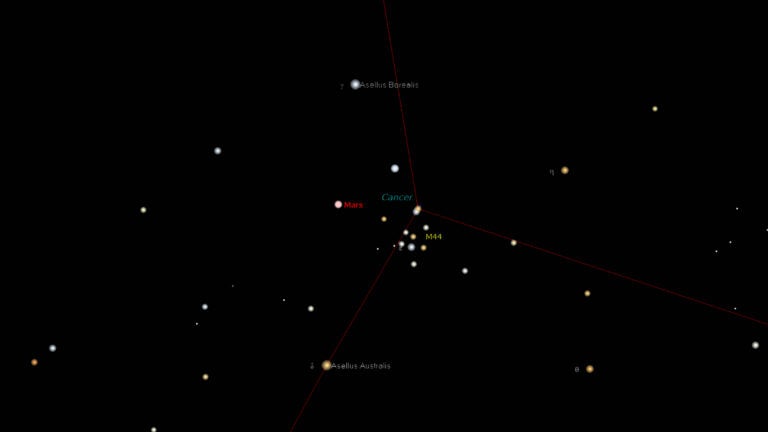The classic aurorae flash across the sky and move in curtains and arcs. These are called discreet aurorae, and they can be bright enough to read by. Diffuse aurorae are harder to see and typically look like fuzzy clouds, which are better detected by long camera exposures.
In either case, northern lights are just emissions of photons. The solar wind accelerates particles during their final 10,000-kilometer-plunge into the atmosphere, and then they roughly distribute perpendicularly along Earth’s magnetic field lines. That creates the arcs. Earth’s atmosphere is mostly nitrogen and oxygen. Aurorae occur when ionized nitrogen picks up an electron and smashes into oxygen and then they both return to a ground state. That is, the oxygen radiates away the energy in greenish wavelengths.
When oxygen is excited in the atmosphere, it typically happens at lower altitudes. But in intense storms, it also can happen at higher altitudes and with other gases, which creates a plethora of colors.
As you watch the northern lights dance, they also appear to have a bottom level. This is because atomic oxygen is less common below 62 miles (100 kilometers) altitude in Earth’s atmosphere.
Associate Editor










